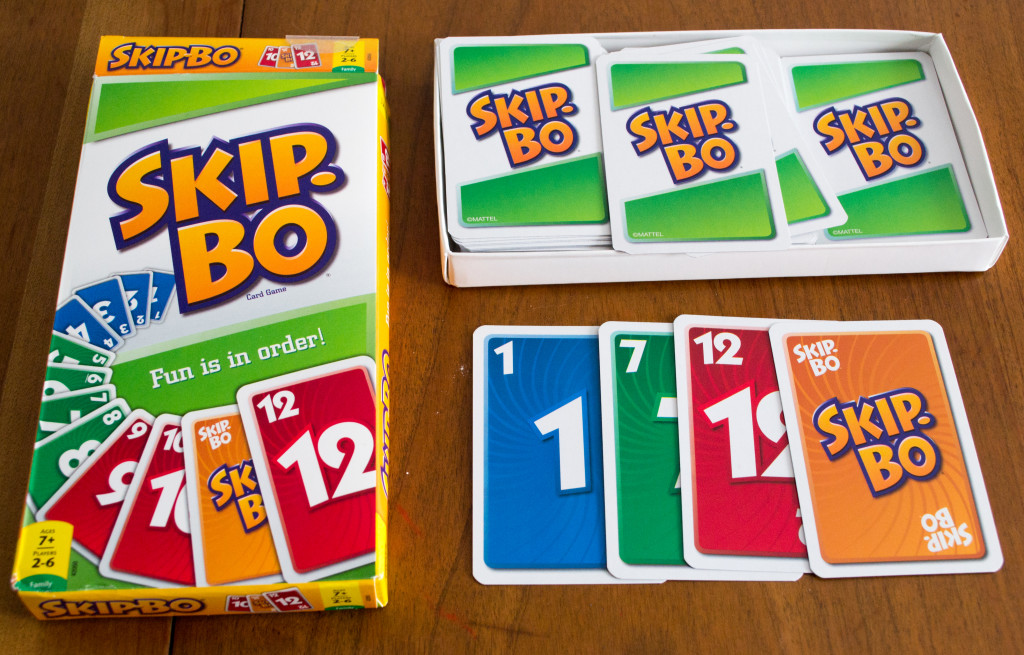You’ve been given a pile of cards and your goal is to get rid of them as quickly as possible, for the first one to do so wins the game. In order to do that, you’ll be adding these cards to several central stacks to which everyone will have access. It’s like “UNO” in the sense that you’re trying to be the first to go out, but instead of matching colors/numbers, you’ll be laying down cards in sequential order (with the help of wild “Skip-Bo” cards). To help you with this task, you’ll have a series of discard piles from which you can add to the central piles. It might sound confusing for some, what with all these piles…so let’s take a moment to briefly go over the rules in more detail before checking out the review.
Components
The game includes 162 cards and instructions.
Setup & Gameplay
All of the cards are shuffled together to form a draw pile. From this massive draw pile, each player receives so many face-down cards to form their stock pile (which is the pile they need to get rid of in order to win the game). The number of cards received all depends on the number of players, though you can all agree on fewer cards for a quicker game. The top card of this pile is always flipped face-up (with the rest underneath remaining face-down). Each player will reserve themselves some space for four personal discard piles, as well as space for four building piles to which everyone can contribute. The youngest player goes first.
The game is played over a series of turns. On a player’s turn, they’ll:
1. Draw up to five cards from the central draw pile.
2. Add as many cards as you’d like to the four central building piles. These cards can come from the top card of the active player’s stock pile and the active player’s discard pile. If the player uses the card showing in their stock pile, they’ll flip the next one over in order to reveal it (and play it, if possible). To legally play a card to the central building pile, the player MUST add the cards in sequential order (place a “6” on top of a “5”). A Skip-Bo card is wild and can be used in place of any number. If a player plays all five cards on their turn, they can draw five more and keep going. Finally, a “1” or Skip-Bo card is required to start a central building pile while completed piles (when a “12” is played) are placed off to the side to be later shuffled into a new draw deck should the original run out of cards.
3. At the end of the active player’s turn, they’ll play a card from their hand and place it into one of their four discard piles (the order/numbering doesn’t matter).
Turns continue until one player plays their last stock pile card…whoever does, wins the game! You can play over the long haul if you’d like by including a point system, by playing best out of three, or etc.
Editor’s Note: The above doesn’t cover all of the rules, but should give you the general idea as to how the game is played.
The Review
I’ll opt to keep this short and sweet: “UNO” lovers will more than likely enjoy playing this game too. My only complaint is the box and its card holder…that is, there are no dividers in said box to keep the cards from sliding all over the place while the game is in transit/storage. Pulling the holder out of the box usually results in cards sliding backward into the box and it’s just too messy and inconvenient to ignore. Other than that, gameplay is both solid and family-friendly with the average retail price being fairly good at about $7-10.
Final Verdict: 7/10
—

